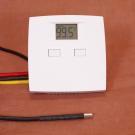Quote:
A wafer switch works exactly the same way a HWT works. The trick to the HWT is to make it cycle faster. In other words it stays on for a short amount of time, and then kicks out, with a well insulated bated housing it is possible to maintain a plus or minus 1 degree temp shift. Use a 60 watt heat bulb in place of a white bulb, mount the bulb as close to the HWT as possible. This way the bulb heats up the stat fast and it kicks out, but it does not kick back in until the temp drops below the kick in point. This will again cycle faster keeping the temp only at the top near the bulb, then it circulates through the bator.
One thing to keep in mind is that either a wafer or a HWT is NOT a actual register of temperature, but the external and internal pressure based on the atmosphere conditions in the bator. This will change if the humidity levels are not kept constant, and this is where some problems come in as when the weather changes and barometer levels. Keep the humidity up in the room and the humidity will be up in the bator. Monitor high temps when weather changes, low temps usually do not cause a problem unless they are extreme.
A wafer switch works exactly the same way a HWT works. The trick to the HWT is to make it cycle faster. In other words it stays on for a short amount of time, and then kicks out, with a well insulated bated housing it is possible to maintain a plus or minus 1 degree temp shift. Use a 60 watt heat bulb in place of a white bulb, mount the bulb as close to the HWT as possible. This way the bulb heats up the stat fast and it kicks out, but it does not kick back in until the temp drops below the kick in point. This will again cycle faster keeping the temp only at the top near the bulb, then it circulates through the bator.
One thing to keep in mind is that either a wafer or a HWT is NOT a actual register of temperature, but the external and internal pressure based on the atmosphere conditions in the bator. This will change if the humidity levels are not kept constant, and this is where some problems come in as when the weather changes and barometer levels. Keep the humidity up in the room and the humidity will be up in the bator. Monitor high temps when weather changes, low temps usually do not cause a problem unless they are extreme.




